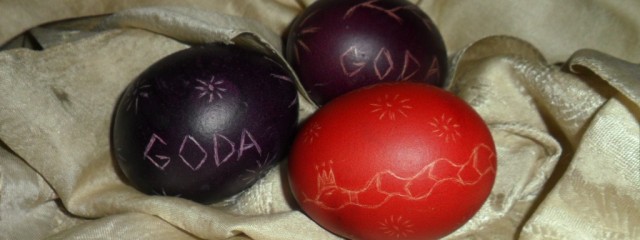I had great opportunity to celebrate Easter in Sweden. Luckily I had Swedish friends and they told for me a lot about old traditions, and we celebrated it in a traditional way. So now I want to share experience not about that how great and fun it was, but want to give you information, what I learned about Easter in Sweden.
Easter in Sweden is devoid of its’ religious connotations and is mostly looked upon as an occasion for festivity.
Easter has, up to our own times, been a religious holiday in Sweden, and Easter Week has had an air of solemnity about it. Weddings and christenings, for example, have not been considered appropriate during this week, and only in recent years have Swedish cinemas been open on Good Friday. Easter Week starts with Palm Sunday, commemorating Christ’s triumphant entry into Jerusalem. In catholic countries this is a day of joyous processions of people carrying palm fronds and laying them before the image of Christ. In Sweden’s climate some other kind of branches had to take the place of palms; early budding varieties of willow were a common choice. Today, such branches are brought into homes and offices so that they have developed leaves by Palm Sunday. In many parts of the country these branches are even called “palms”.
One peculiar thing is the involvement of witches. Apparently, back in the days the Swedes believed that witches were particularly active and would consort with the devil at this time of the year.
Children dressed up as Easter witches with long skirts, colorful headscarves and painted red cheeks, go from house to house in the neighborhood and present the occupants with paintings and drawings in the hope of getting sweets in return. According to Swedish folklore, during Easter the witches fly to Blåkulla (the Blue Mountain) to meet the devil.
On Saturday, children are also given Easter eggs that are filled with sweets and small chocolate eggs. Parents that feel particularly “Easterish” hide the eggs around the house or backyard and let the children go on an egg hunt.
Special for western Sweden is the Easter fires which take place on Saturday. In folklore, the fires are meant to scare the witches as they are flying back from their party with the Devil. Several islands in Gothenburg’s archipelago (especially the Öckerö islands) have a traditional competition for building the largest fire.
People did everything they could to protect themselves from the evil powers that play these days. They lit bonfires, shot off fire-arms into the sky, painted crosses, stars and other holy symbols over their doors, buried psalters under their thresholds and hung scythes and axes criss-cross over their livestock. Hysterical fear of the supernatural has triggered off witch-trials from time to time over the centuries, sending unknown numbers of women to the gallows or the stake.
Sticks of birch and willow decorated with colorful feathers are also a feature of the Swedish Easter. These can be seen in most houses, flower shops and supermarkets.
Eggs are one of the most common Easter foods. They are hard-boiled and often decorated or painted. As for the Easter meals, the traditional Easter lunch generally includes varieties of pickled herring (sill), cured salmon and Jansson’s Temptation (potato, onion and pickled sprats baked in cream). Easter dinner usually includes roast lamb with potatoes au gratin (potato bake), and asparagus. These meals are best enjoyed when accompanied by snaps, Easter beer and drinking songs.
The Easter egg here has a long history. It is said that these colored eggs were obtained near graves from B.C. in Gotland. As they were painted in red and yellow, they were thought to represent the sunrise and sunset. Even today the people of Sweden, like other Europeans, paint their eggs at Easter and they are considered to be very auspicious.
Do you have interesting Easter traditions in your country?





